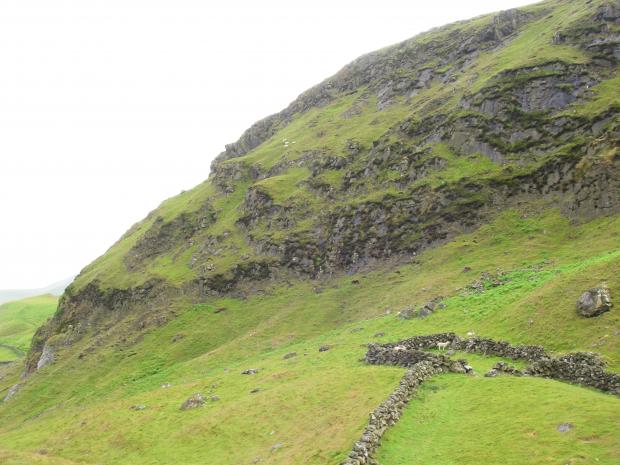
The summit of Scawt Hill marks the outcrop of an olivine dolerite plug which intrudes the Cretaceous White Limestone and overlying Tertiary lavas of the Lower Basalt Formation. High temperature and low pressure thermal metamorphism at the plug contacts has produced unusual calc-silicate mineral assemblages in the limestone, and assimilation of the carbonate rock has produced a sequence of alkali basic igneous rocks just inside the old volcanic conduit. A remarkable series of minerals have resulted, many rare and some described for the first time.
Scientific publications from the 1920’s and 1930’s, described the mineralogical significance of dolerite-limestone contacts, including those at Scawt Hill. These early writings inspired many other geologists to find similar rock relationships worldwide. Interpretation of the associated alkali basic rocks also prompted a revision of the petrogenesis of similar rocks at other sites throughout the world. Scawt Hill demonstrates the progressive desilication of a basic magma, by lime assimilation, to the end point of undersaturation, when melilite bearing rocks were formed. The origin of alkali and alkali basic igneous rocks is still a highly contentious issue. The rock series at Scawt Hill, amongst others, proved convincingly that limestone assimilation could produce a differentiation series of basic igneous rocks markedly undersaturated and enriched in alkalis, but on a very restricted scale. This contribution to petrogenesis was appreciated worldwide.
Related articles
- ASSI Guidance for Public Bodies/Competent Authorities
- Coastal Areas of Special Scientific Interest
- Conservation Management Plans (CMPs)
- European Marine Sites - Marine Special Areas of Conservation and Special Protection Areas
- Introduction to Conservation Management Plans (CMPs) for Northern Ireland’s Special Areas of Conservation
- Marine Conservation Zones
- Marine Protected Areas
- Marine Ramsar sites
- Portrush Coastal Zone
- Special Areas of Conservation
- Special Areas of Conservation for Harbour porpoise
- Special Protection Areas
